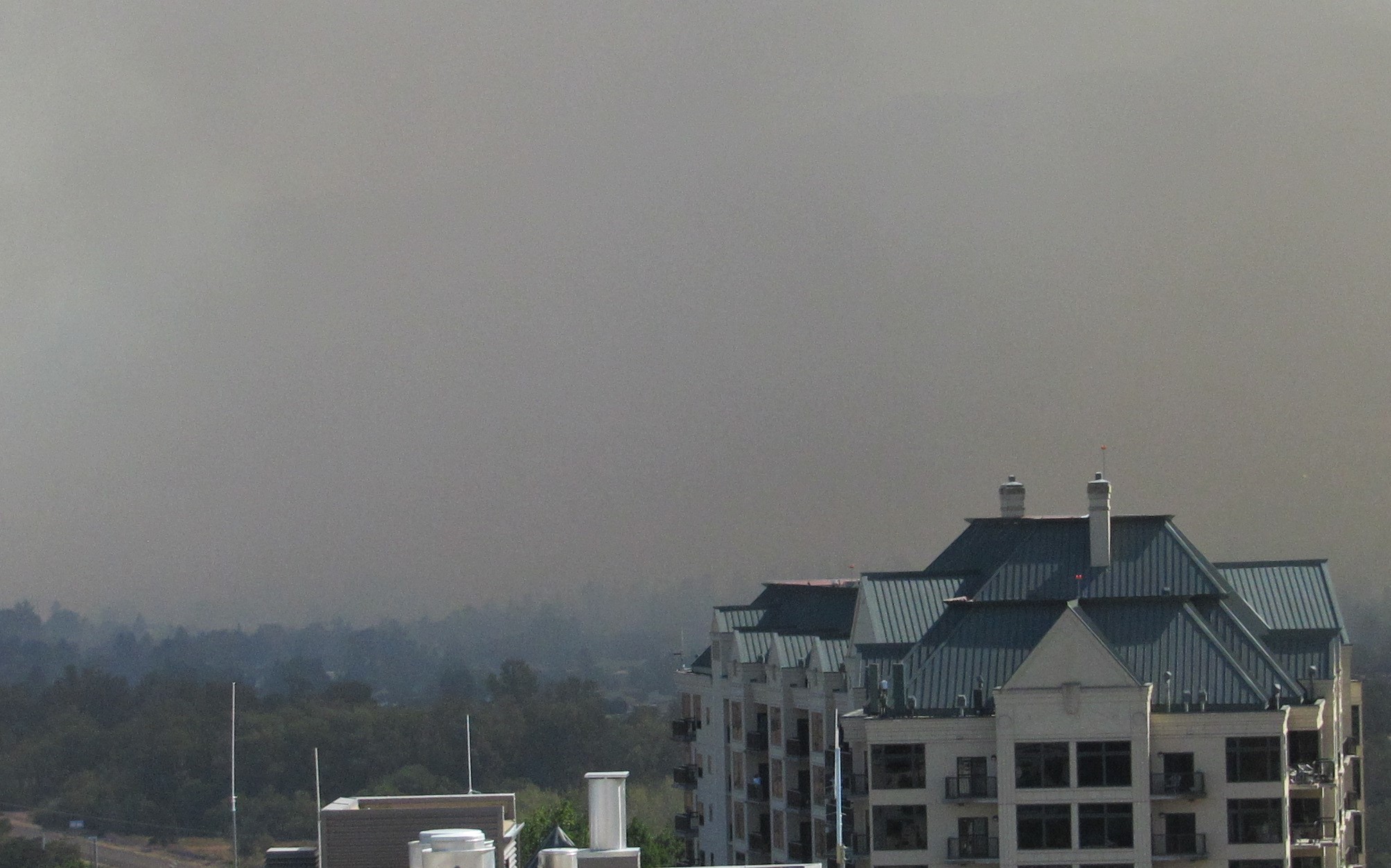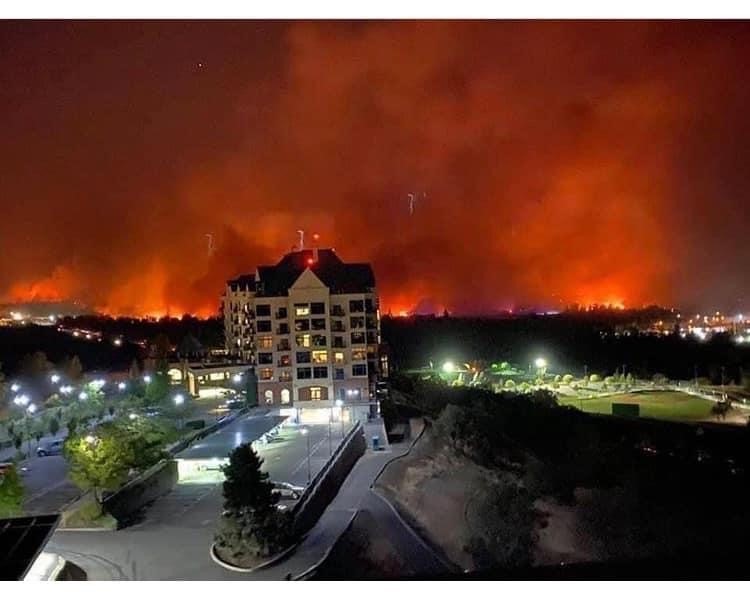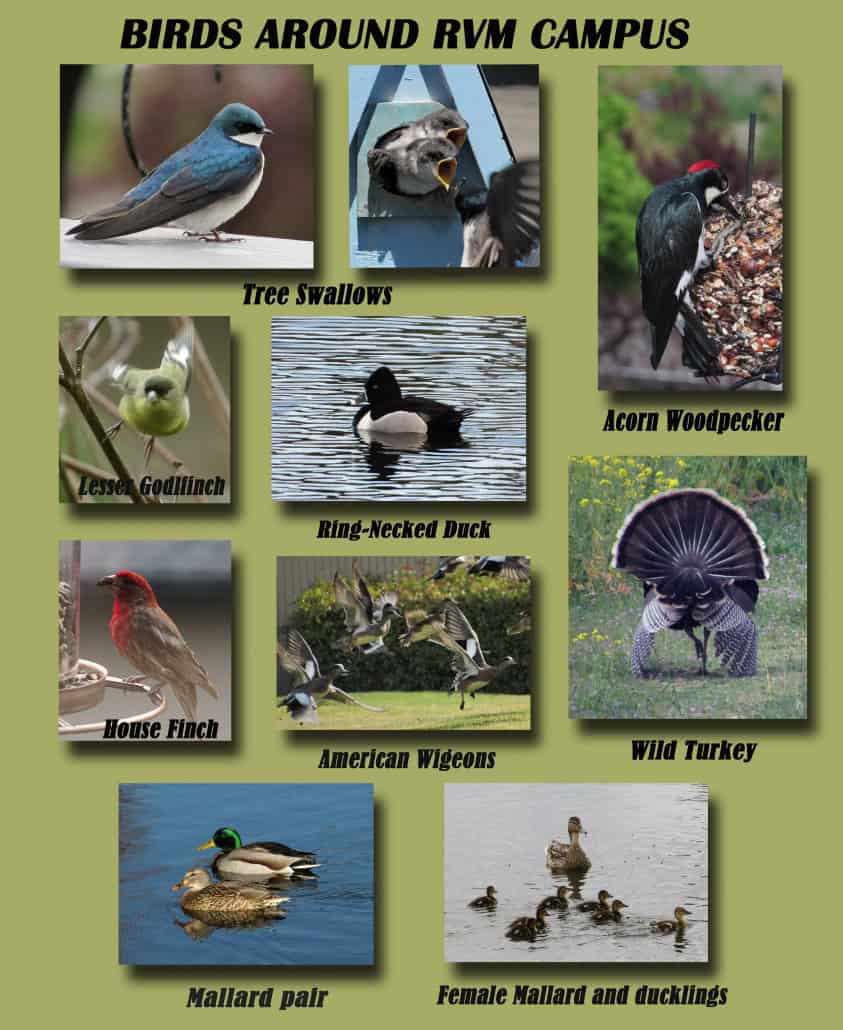What’s New in June
Dear Readers: We don’t have archives by issue, but the Complement’s format has been revised so that you can view all of the past articles on any given page. If there is a “Load More” link at the bottom of the page, clicking it will bring up the older articles — all arranged in chronologic order.
An added service feature — if you would like to get a personal email when we put out the RVMlist notice of a new issue or new material, email us at openinforvm@gmail.com and we will put you on the mailing list
NEWS & VIEWS
Dealing with Health-Related Crises, by Connie Kent
-The tangle of medicine and management
A Few More Health-Care Questions, by Bob Buddemeier
-Even more tangles
Father Joel is movin’ on!, by Joni Johnson
-Hail and Farewell — with an original goodbye poem by Fr Joel
A Cautionary Tale — Anonymous
-An unprepared-for death
The Experiment Continues — README Again!
– -An invitation to sample an opinion page
in Big, Borrowed, or Both
Toward a Planet-Wide Culture of Non-Violence, by Russy Sumariwalla
-a reprint of an article published in the UN Chronicle, 10/2/2018
3550: the Portland Mirabella quarterly magazine (most recent issue)
Mirabella Monthly, Newsletter of the Seattle Mirabella (most recent issue)
ARTS & INFO
Manor Penthouse Bonsai, a photo collage by Reina Lopez
Do Cats Grieve? by Bob Buddemeier
Timely Word Play, by Connie Kent
RVM May-July Event & Entertainment Schedule
June Library Display, by Anne Newins
Power Couple — (Book Review), by Bonnie Tollefson
Digital Currency Firm Eyes Manor Retail Location, by A. Looney
–Our Nit-Wit Newz correspondent has returned!
PREPARE
‘Tis the Season to be…ALERT!, by Bob Buddemeier
-Don’t put that mask away yet!
New Features and Services
We don’t have archives by issue, but the Complement’s format has been revised so that you can view all of the past articles on any given page. If there is a “Load More” link at the bottom of the page, clicking it will bring up the older articles — all arranged in chronologic order.
An added service feature — if you would like to get a personal email when we put out the RVMlist notice of a new issue or new material, email us at openinforvm@gmail.com and we will put you on the mailing list
RPG Status and Plans
RPG status and draft guidance for Coordinators, 5/7/21
——————————————————————————————————————
Discussion among RPG and RVM administration representatives have arrived at the following understandings:
The developing RVM emergency preparation plan will be available within 2-3 months.
It is expected that residents will help in an emergency and cooperate with RVM response activities.
Residents will be able to participate in RVM emergency response training after the staff gets initial training.
The question of resident information and emergency databases is under discussion. RVM is prohibited from sharing some kinds of data that are obviously important to emergency preparations and responses. The questions of how data needed by RPG should be collected, maintained and protected are part of the overall resident database considerations of the Technical Committee (Ron Constable and Butch Finley, co-chairs). Dan Wagner has been assembling and coordinating RPG input on data needs, and is acting as interface with the Technical Committee.
RVM has contracted for an emergency management application (app) produced by Belfor Corp. The product has been reviewed, but not yet acquired or implemented. Its use to manage communications and operations in an emergency will probably require some revisions of current RPG plans involving the Incident Commander, Building Coordinators, and communication protocols. Discussions are ongoing.
Other matters under discussion include the need for training and evaluation to maintain an effective group of resident coordinators, and the question of what sort of first aid capabilities should be adopted and supported.
——————————————————————————————————————
RPG has received the hand-held radios ordered for the coordinator network. These have been charged and programmed for use according to network design. They are being released to Area/Building coordinators for distribution to the neighborhood/Floor coordinators. Familiarization and training protocols have been developed and are described below.
——————————————————————————————————————–
DRAFT COORDINATOR GUIDANCE
The following material is intended to provide a context for the description of training in radio use, and a framework for development of an operation manual as the questions discussed above are resolved
The RPG Coordinator organization: Purposes
The primary purpose of the RPG is communication, and specifically communication related to emergency and disaster effects on residents. No matter how sophisticated technical communication mechanisms may be, there is no substitute for direct human communication in transmitting information and determining whether it has been received and understood.
Four communications types and purposes can be identified.
- Acquaintanceship and community building – coordinators need to be familiar with the residents in their neighborhoods, floors, or areas, and to understand both special needs and special abilities in terms of emergency or disaster response.
- Preparedness – coordinators can assist residents in understanding needs for emergency/disaster preparedness and in making appropriate preparations.
- Communication to residents – coordinators provide back-up and verification channels of communication for critical information from RVM to residents (e.g., evacuation preparation status.).
- Communication from or about residents – in the case of a major disaster (e.g., Cascadia earthquake) coordinators will self-activate to assess damage and injuries in their areas of responsibility, and transmit the information to the Incident Commander through the established radio communication channels.
Other purposes, such as first aid and community support in the aftermath of a disaster, are important but secondary to the primary communication role.
Communication Training and System Operation
Hand-held radios are being distributed to coordinators. Training in use will have three components.
- Basic use and maintenance – charging, turn-on, transmission reception.
- Regular “social” use to develop familiarity and comfort in operation.
- Training exercises to practice the discipline and protocol of emergency use.
The training exercises will also test and develop the linkages between Area/Building coordinators and the communication center/Incident Commander.
Emergency Protocols
In parallel with the radio training, disaster response operating procedures will be developed to provide consistent and reliable responses in emergency situations.
‘Tis the Season to be…ALERT!
by Bob Buddemeier
Now that most of us are worrying less about COVID, we can focus some of that nervous energy on the next larval disaster waiting in the wings.
It is Wildfire Season and it promises to be long, hot, dry, and dangerous. The chances are good that we will experience some kind of fire-related problem(s). Fortune favors the prepared: get ready now and suffer less later.
General emergency and preparedness information can be found on the myRVM Emergency Preparedness page and at https://thecomplement.info/prepare/, the Resident Preparedness Group webpage. Specific sources will be mentioned below.
 SMOKE is the most probable impact. The valley we live in is an extremely effective air pollution trap, and if there is a major fire halfway close to us the air quality is likely to become poor, or very bad, or off-scale-hazardous. When that happens, it will probably last for days, and maybe weeks.
SMOKE is the most probable impact. The valley we live in is an extremely effective air pollution trap, and if there is a major fire halfway close to us the air quality is likely to become poor, or very bad, or off-scale-hazardous. When that happens, it will probably last for days, and maybe weeks.
It’s not good for anybody, but people with respiratory problems really need to prepare and protect.
To prepare: 1. If you can go away, plan to do so. 2. Stock up on N95 or KN95 masks – not the COVID blue paper or designer kinds. 3. If you need/want room air purifiers, get them now. 4. Other supplies – food and household goods to minimize outside trips, tape to seal leaky door or window joints, etc.
When it happens: 1. If possible, leave the area (air quality websites — some with forecasts — can help you decide where to go: https://oraqi.deq.state.or.us/home/map, https://gispub.epa.gov/airnow/). 2. Stay inside with house tightly closed. 3. Run the AC fan continuously. 4. If you must go outside, wear a mask; if conditions are really bad wear it inside too. 5. Run air purifiers if you have them.
POWER OUTAGES are common side effects of wildfires, either because of fire damage to the electrical infrastructure, or because of precautionary shutdowns by power companies. In either case, duration may be hard to predict.
Protracted power outages are about much more than having enough flashlight batteries; they affect most aspects of life. Commerce is disrupted (no ATMs, cash registers or internet), communications break down, and electrical equipment can’t be operated (including safety and security gear and home medical devices).
For RVM-specific information, see “Power Outage Information” on the myRVM Emergency Preparedness page, or download here. The effects of extended power outages are addressed as part of the earthquake preparedness material in https://thecomplement.info/prepare/ — see especially Light and Electricity.

FIRE is the least likely but most devastating direct impact, and as the Almeda Fire of 2020 showed, it is a very real possibility. It is challenging to prepare for and respond to, because it will probably require evacuation and a quick response. Whether the evacuation is off-site and long-term or local (e.g., cottage residents sheltering in the more fire-resistant high-rises), evacuees will need to take some critical basic possessions with them.
To prepare: 1. Each individual needs to have a basic, minimum go-bag that he or she can carry easily. Even if it only weighs a pound or two it can contain identification, money, contact information, medical information and medicines, and a few personal hygiene and or survival items (e.g., toothbrush, small flashlight). 2. This can be a component of a larger go-bag for the individual or couple, containing additional personal gear, clothing, some food and first aid supplies, etc., but the per-person-portable bag is critical – see pages on go-bags, documents, and medications. 3. If you have a car, make sure to keep the tank at least half-full and stock it with emergency supplies appropriate for storage in a vehicle. 4. Become familiar with the kinds of emergency information you may receive, and how it will arrive – TV, internet, landline, cell phones, neighbor – and enroll in the available emergency notification services.
When it happens: Fire emergencies typically progress through stages as the fire draws closer.
Evacuation Alert Level 1 – Get ready. Open your garage door if you have one (see additional information below). Get your basic go-bag and other must-take items (wallet, keys, cell phone) together and ready to go. Dress appropriately for ‘roughing it.’ Complete your big go-bag and assemble other items you need or want to take along (e.g., pet supplies).
Evacuation Alert Level 2 – Get set. If you have a car, load everything into it. If not, have what you can carry assembled, packed, and ready to go; other take-alongs should be compactly packed for transport by others (if available).
Evacuation Alert Level 3 – Drive or walk to the designated assembly point or destination, following the directions of RVM staff and/or law enforcement.
+++++++++++++++++++++++++++++++++++++++++++++++++++++++++++++++++++++++++++++++++++++
Additional information
One of the first recommended actions for Alert Level 1 is to open your garage door – and if you can park the car nearby without impeding traffic, to take it out of the garage. In the Almeda fire evacuation, part of campus lost power, and people had difficulty getting the garage doors open.
RVM is systematically replacing the springs in the cottage garage door openers. According to Rick Ramirez of Facilities Services, the originally-installed springs were incorrect, and resulted in the doors being excessively hard to open when the power was off. The changeover should substantially improve that; however, it will not be completed for the current fire season. Work started in the 1100 block and has progressed to the middle of the 1200 block, but Rick says that it may be December before all of the cottage garages are upgraded. The work is slow, and complicated by the fact that differences in original equipment are encountered.
Residents can form neighborhood teams to help each other (a good idea in any case!) or take some of the simple do-it-yourself steps to make opening a power-off door easier.
Cottage residential areas are divided into Areas (a total of 11) and neighborhoods (2 to 4 within each Area). In the high rises, Floors and Building Sectors are analogs of the Neighborhoods and Areas. Residents’ Preparedness Group volunteers serve as coordinators within each grouping (Neighborhoods/Floors and Areas/Building Sectors). Their primary role is to support RVM emergency preparedness and response by providing direct communication with residents, and to assist in building resident preparedness at the individual and community level
The Manor Mart is Open!
ANNOUNCEMENT
The Manor Mart is now open for business on the lower level of the Terrace building, across from the Clinic, where the Pharmacy used to be. It serves RVM residents and employees between 10 am and 3 pm Monday through Friday. The Manor Mart comes close to being a necessity for some of our residents, and can be a convenience for all of us. We want it, we need, it and we should support it by using it when we can.
Entry-Fee CCRCs Endangered?
Article circulated on RVMlist by Susan Ball, 25 April 2021
Senior living professionals are more confident in the viability of the traditional continuing care retirement community (CCRC)/life plan community model today than they were before the Covid-19 pandemic.
However, the picture is complicated by the fact that many industry pros believe that entrance-fee communities are less attractive today than they were in 2019.
That’s according to findings released Thursday from the 2021 State of Senior Living survey from architecture and design firm Perkins Eastman. The survey gathered input from executive leaders and other workers with senior living provider companies, as well as industry consultants. The majority of respondents — 85% — primarily worked at or with a not-for-profit organization.
When asked if the entry-fee CCRC model is endangered, 44% of respondents said yes and 56% said no.
In three previous surveys, a majority of respondents had said that entry-fee CCRCs are endangered.
The increased confidence in the CCRC model makes sense, given how these communities have weathered the pandemic.
CCRCs and life plan communities have consistently reported higher occupancy rates than other types of senior living communities.
In the first quarter of 2021, life plan community occupancy stood at 84.3% across the primary and secondary markets tracked by NIC MAP Vision, according to data also released on Thursday, separate from the Perkins Eastman report. Non-life plan community occupancy averaged 74.9% in Q1 2021.
Nonprofit CCRCs/life plan communities fared even better, with average Q1 2021 occupancy of 86.1%.
The strong performance of CCRCs during the pandemic will likely be “discussed for years,” according to Eric Mendelsohn, CEO of real estate investment trust National Health Investors (NYSE: NHI).
The large campuses may have helped with social distancing and infection control; the resident base may have been younger and healthier than in other settings; and the strength of the housing market, supporting home sales to fund entry fees, all might be contributing factors, Mendelsohn postulated during an appearance on SHN+ TALKS.
Yet, another finding from the Perkins Eastman survey is confounding.
In 2019, only 13% of respondents said that entrance-fee CCRCs had become “less attractive” than they were previously. But in 2021, 35% of respondents said entrance-fee CCRCs have become less attractive.
Respondents might believe that CCRCs and life plan communities have taken a reputational hit due to bad press during the pandemic, but that resulting negative sentiment will be short-lived, the report authors suggested.
Or, respondents might believe that — while entry-fee communities are less “endangered” today than they were in 2019 — they do face increased competition from alternative models, such as rental communities. This hypothesis is supported by comments that some senior living executives have recently made to Senior Housing News.
Ohio Living, for example, has introduced more rent-based options over the last three years.
“The rental model is going to be more in demand going forward and in our product offering,” Ohio Living CEO Larry Gumina told SHN last winter.
Other findings from the Perkins Eastman survey include:
— Independent living/assisted living hybrid communities are seen by 46% of respondents as more appealing than previously
— Almost 70% of respondents said “apartments for life,” in which residents can age in place as their needs increase, are more appealing than in the past
— 80% of respondents said “new operational measures to address the spread of disease” is a long-term trend
— The majority of respondents believe that loss of revenue due to pandemic-related restrictions and concerns will be a short-term trend
— 55% of respondents said that increased operational costs — including for PPE and new staff hires — is a long-term trend
Timely Word Play
by Connie Kent
It’s time. We’re on time.
We spend time. We buy time. We save it (to spend later?) Many times we squander it. On occasion, we even kill it.
At times, we don’t have enough. We run out of time. We need more. We make time. Sometimes we just take it.
We use our time – wisely or not. We fill our time. We allow enough of it – or not. We have it on our hands. Sometimes it’s heavy on our hands.
Sometimes, time’s on our side. Sometimes not.
Time passes. Time flies. Time drags. Time slows down. Time stands still. We take time out.
All the time. Most of the time.
Time heals.
The time is past. The time is yet to come. The time has come.
Time’s up. We’re out of time.
Still More Words at Play
Priceless Treasures Excavated by the Consummate Word-miner,
Tom Conger
“When I use a word,” Humpty Dumpty said, in rather a scornful tone, “it means just what I choose it to mean—neither more nor less.”
“The question is,” said Alice, “whether you can make words mean so many different things. Through the Looking Glass – Lewis Carroll
For this chapter, we are indebted to Why Do We Say That? compiled by Graham Donaldson and Sue Setterfield, Dorset Press 1989.
Put a sock in it! – “In these days of compact discs, videos and digital recordings, it is astonishing to think that only fifty years ago [1939] people used wind-up gramophones with the sound emerging from a large horn. A volume control was a thing of the future. So when Aunt Agatha complained of that dreadful Charleston noise there was only one thing to do—put a sock in it—literally. One or more woolen socks were pushed into the horn of the gramophone to muffle the sound. Today it means, quite simply: ‘shut up’.“
load of old codswallop – “When somebody says something which is nonsense, far-fetched, or simply untrue, they are often accused of speaking ‘a load of codswallop.’ We have a certain American gent called Hiram Codd to thank for this colourful expression. In 1875 he patented a special bottle of mineral water which became very popular—except among hardened beer drinkers. The word ‘wallop’ was already well in use to describe alcoholic drinks and so, sneeringly, Hiram’s concoction—and other weak drinks—became known in bars as ‘Codd’s Wallop.’ Gradually, anything inferior or false became known by the single word ‘codswallop’.”

toady – “This saying is used to criticise somebody who, to further his own ends, says or does anything to please his superior. It comes from the days of traveling medicine men in the American ‘Wild West.’ They used to sell useless potions to the public. Taking advantage of the popular but false belief that toads were extremely poisonous, the ‘quack’ doctor would get an accomplice to swallow, or pretend to swallow, a toad. He would then immediately drink one of the doctor’s potions and, much to the amazement of the crowd, walk away fit and well.”
hair of the dog – “After a party, it is not unusual for some of the guests to wake up the next morning with a hangover. The cure is said to be another drink, or ‘The hair of the dog.’ This is based on the superstition that people who are ill after being bitten by a dog can only be cured by swallowing a piece of burnt hair from the same animal. In truth, the ‘cure’ seldom works.”

rigamarole – First you do this, then you do that, then you do another thing, then…oh, what a rigamarole!’ That’s just what we call a long, involved, complicated way of doing things. The 700-year old expression began life as the Ragman Roll, given to King Edward I by Scottish noblemen. Each signed a deed pledging loyalty to the king and affixed his seal. The deeds were then joined together to form a document 40 feet long! The Ragman Roll is kept at the Public Records Office, London.”
deadline – A deadline is the final time by which a job must be finished. Journalists use the word a lot [see: The Complement…]. If they don’t meet their deadline their work is useless [not going there…]—or dead—because it will have missed the edition. The phrase comes from the American Civil War in the 1860s. A line was marked all around the wire fence of the Andersonville prisoner-of-war camp and any prisoner seen crossing the line was, without warning, shot dead.”
“A word is not a crystal, transparent and unchanged, it is the skin of a living thought and may vary greatly in color and content according to the circumstances and the time in which it is used.”
Justice Oliver Wendell Holmes
RVM Spring Birds
photo collage by Reina Lopez

